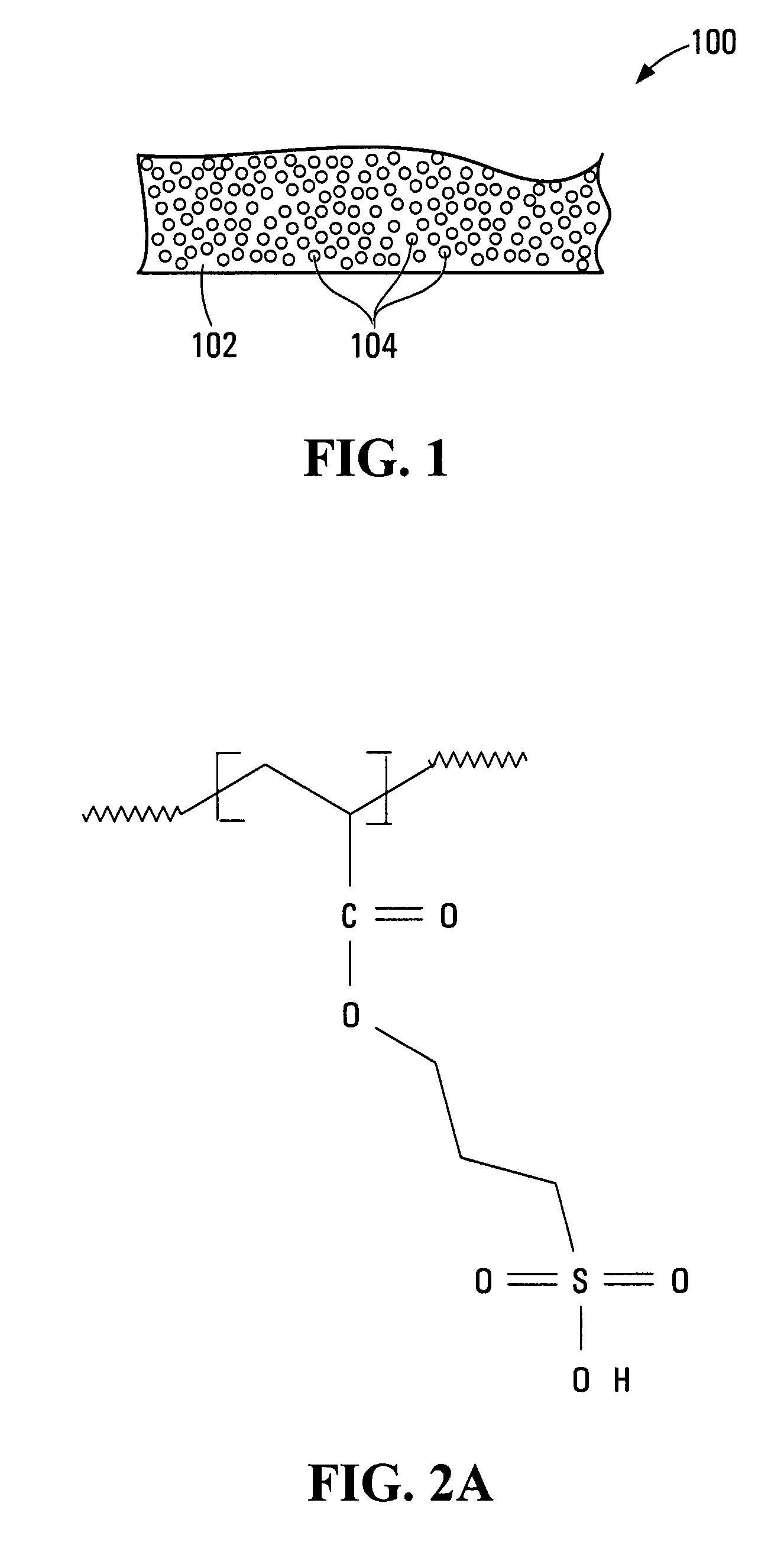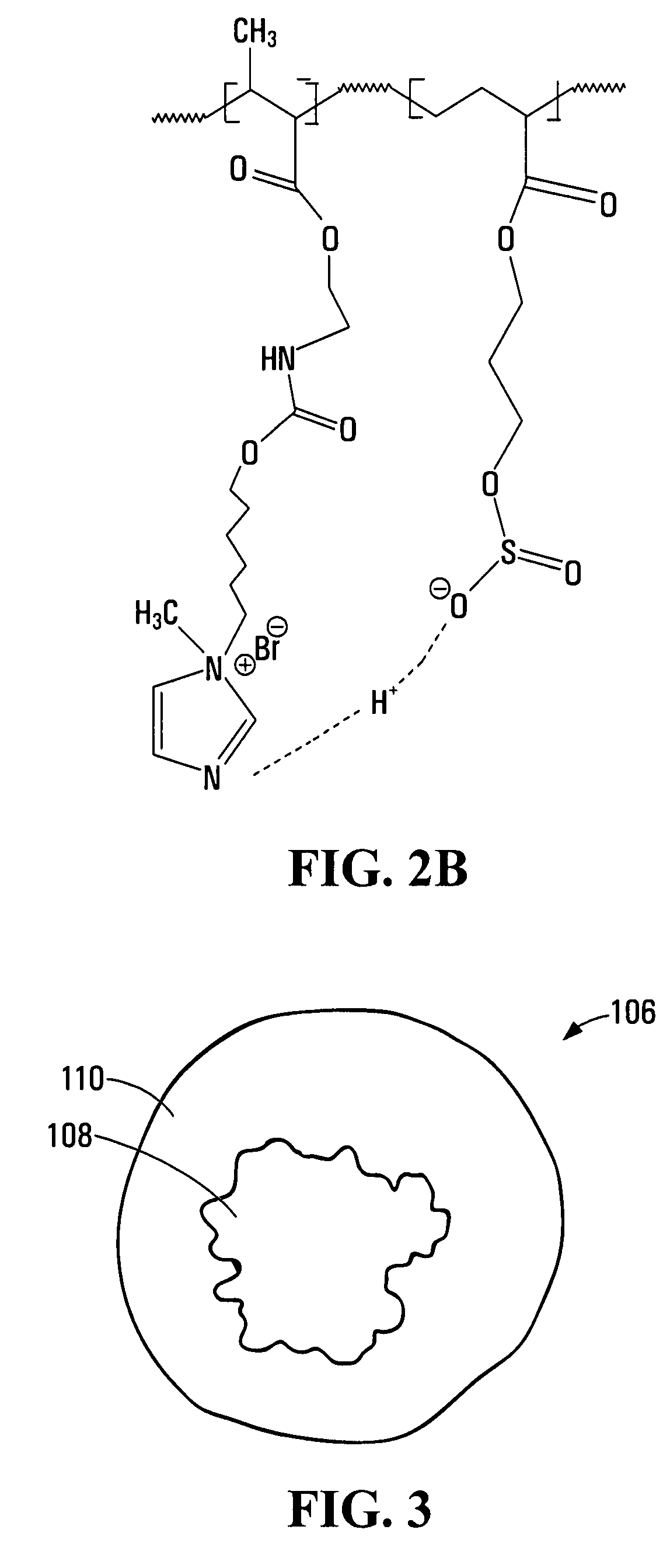Proton-exchange composite containing nanoparticles having outer oligomeric ionomer, and methods of forming
a technology of composite membranes and nanoparticles, which is applied in the direction of cation exchangers, fuel cells, electrochemical generators, etc., can solve the problems of reducing proton conductivity, nafion membranes are not suitable for use in hsub>2/sub>-fcs, and significant influence on proton conductivity in pem
- Summary
- Abstract
- Description
- Claims
- Application Information
AI Technical Summary
Benefits of technology
Problems solved by technology
Method used
Image
Examples
examples
[0072]Fumed silica powder (average particle size about 7 nm), TEVS, Et3N, bromine copper(I) bromide, SPA-K, bi-pyridine (bPy), and SPFP resin or Nafion™-117 (from Aldrich™) were obtained from commercial sources and were used as received for preparing the samples as described below.
[0073]Cationic monomer EMACI was prepared as follows. 6-Bromo-1-hexanol and 2-isocynatoethyl methacrylate, with a molar ratio of 1:1, were mixed in tetrahydrofuran (THF). A catalyst, dibutyldilauriate tin (DDT), in the amount of about 3 wt % of the isocynatoethyl methacrylate, was also added to the mixture. The mixture was stirred at room temperature for 12 hours. The resulting mixture was mixed with 1-methylimidazole, at molar ratio of 1:1, in ethanol, and was subjected to quaternization in nitrogen gas at 40° C. for 24 hours. The resulting product was cationic monomer EMACI (see FIG. 5D).
[0074]Vinyl-silica powders were prepared as follows. 500 mg of fumed silica power and 1 ml of TEVS were added to 50 ml...
PUM
| Property | Measurement | Unit |
|---|---|---|
| Size | aaaaa | aaaaa |
| Particle size | aaaaa | aaaaa |
| Particle size | aaaaa | aaaaa |
Abstract
Description
Claims
Application Information
 Login to View More
Login to View More - R&D
- Intellectual Property
- Life Sciences
- Materials
- Tech Scout
- Unparalleled Data Quality
- Higher Quality Content
- 60% Fewer Hallucinations
Browse by: Latest US Patents, China's latest patents, Technical Efficacy Thesaurus, Application Domain, Technology Topic, Popular Technical Reports.
© 2025 PatSnap. All rights reserved.Legal|Privacy policy|Modern Slavery Act Transparency Statement|Sitemap|About US| Contact US: help@patsnap.com



